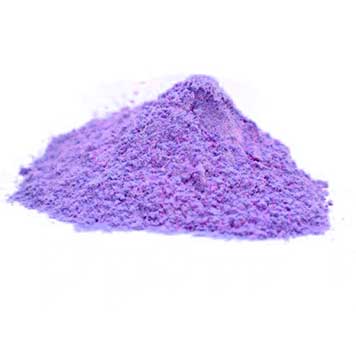
Understanding the Role of Additives in Pet Food Industry Dynamics
Understanding Pet Food Additives A Comprehensive Guide
As pet ownership continues to flourish, the focus on pet nutrition has become increasingly prominent. One of the key elements in ensuring pets receive the best possible diet is understanding the role of food additives in pet food. These additives can play a vital role in the quality and nutritional value of pet foods, but they can also raise concerns among pet owners. In this article, we will explore the types of pet food additives, their purposes, potential risks, and how to make informed choices for our furry friends.
What are Pet Food Additives?
Pet food additives are substances added to pet food to enhance its nutritional value, improve its shelf life, or enhance its flavor and palatability. These additives fall into several categories, including vitamins and minerals, preservatives, flavorings, colors, and texturizers. Each type serves a distinct purpose, contributing to the overall quality of the food we give our pets.
Types of Pet Food Additives
1. Nutritional Additives These are essential vitamins and minerals added to ensure that pet food meets the necessary dietary requirements. Common examples include vitamin E (an antioxidant), taurine (important for cats), and omega fatty acids, which can promote healthy skin and a shiny coat.
2. Preservatives These additives are crucial for prolonging the shelf life of pet food, preventing spoilage from bacteria and mold. Both natural and artificial preservatives are used. Common natural preservatives include tocopherols (vitamin E) and rosemary extract, while synthetic options include BHA, BHT, and ethoxyquin. While preservatives are necessary for safety, some pet owners are wary of artificial options due to potential health concerns.
3. Flavorings Many pets can be picky eaters, and flavor additives help make the food more palatable. These can be natural, derived from meat sources, or artificial compounds designed to mimic specific flavors.
pet food additives

4. Colors While pets are not as visually driven as humans, some manufacturers add colors to pet food to enhance its appearance for the owners. These colors do not have any nutritional value and can sometimes be artificial, raising questions about their safety.
5. Texturizers These additives improve the texture of food, making it more appealing to pets. Ingredients like guar gum and carrageenan can improve the consistency of canned foods.
The Importance of Quality
When selecting pet food, quality should be a top priority. Reading the ingredient list is essential, as it can provide insight into what your pet is actually consuming. Ideally, the food should contain high-quality proteins, whole grains, and a balance of vitamins and minerals. The presence of numerous additives, particularly artificial preservatives and colors, can be a red flag. It's advisable for pet owners to opt for brands that prioritize transparency in their ingredient sourcing and offer clear information about their additives.
Potential Risks
While many additives are safe and beneficial, there are potential risks associated with certain artificial additives. Some studies suggest a link between artificial preservatives and health issues such as cancer. Moreover, synthetic flavorings and colors may cause allergic reactions in sensitive animals. Always consult your veterinarian regarding food choices, particularly if your pet has allergies or specific health concerns.
Conclusion
Pet food additives serve essential roles in the formulation of pet diets, enhancing nutritional value and ensuring safety. Understanding these additives can empower pet owners to make informed choices that align with their pet's health needs. Always prioritize quality and safety in pet food selection, and don't hesitate to seek advice from veterinary professionals. With the right knowledge, you can ensure your furry friend enjoys a balanced, nutritious diet that contributes to their overall well-being. After all, a healthy pet is a happy pet!
-
Buy High-Quality Trichloroisocyanuric Acid for Sale | TCCA 90% SupplierNewsAug.30,2025
-
Pure Sodium Dichloroisocyanurate Dihydrate | Powerful DisinfectantNewsAug.29,2025
-
Industrial Chemicals: Quality & Purity for Every IndustryNewsAug.28,2025
-
Nitrile Rubber Honoring Strict Production StandardsNewsAug.22,2025
-
Aspartame Ingredients Honoring Food Safety ValuesNewsAug.22,2025
-
Fertilizer for Balanced Plant NutritionNewsAug.22,2025
-
Cyanide Gold Processing with High Purity AdditivesNewsAug.22,2025
Hebei Tenger Chemical Technology Co., Ltd. focuses on the chemical industry and is committed to the export service of chemical raw materials.
-

view more DiethanolisopropanolamineIn the ever-growing field of chemical solutions, diethanolisopropanolamine (DEIPA) stands out as a versatile and important compound. Due to its unique chemical structure and properties, DEIPA is of interest to various industries including construction, personal care, and agriculture. -

view more TriisopropanolamineTriisopropanolamine (TIPA) alkanol amine substance, is a kind of alcohol amine compound with amino and alcohol hydroxyl, and because of its molecules contains both amino and hydroxyl. -

view more Tetramethyl Thiuram DisulfideTetramethyl thiuram disulfide, also known as TMTD, is a white to light-yellow powder with a distinct sulfur-like odor. It is soluble in organic solvents such as benzene, acetone, and ethyl acetate, making it highly versatile for use in different formulations. TMTD is known for its excellent vulcanization acceleration properties, which makes it a key ingredient in the production of rubber products. Additionally, it acts as an effective fungicide and bactericide, making it valuable in agricultural applications. Its high purity and stability ensure consistent performance, making it a preferred choice for manufacturers across various industries.





